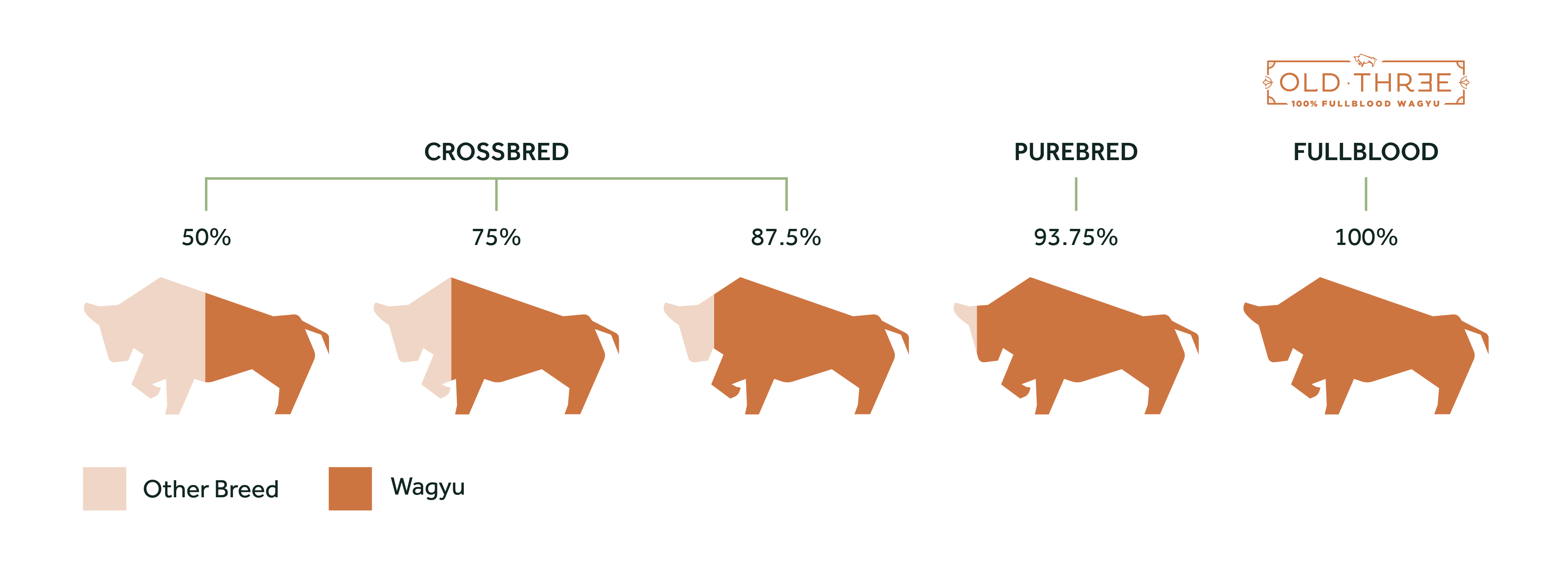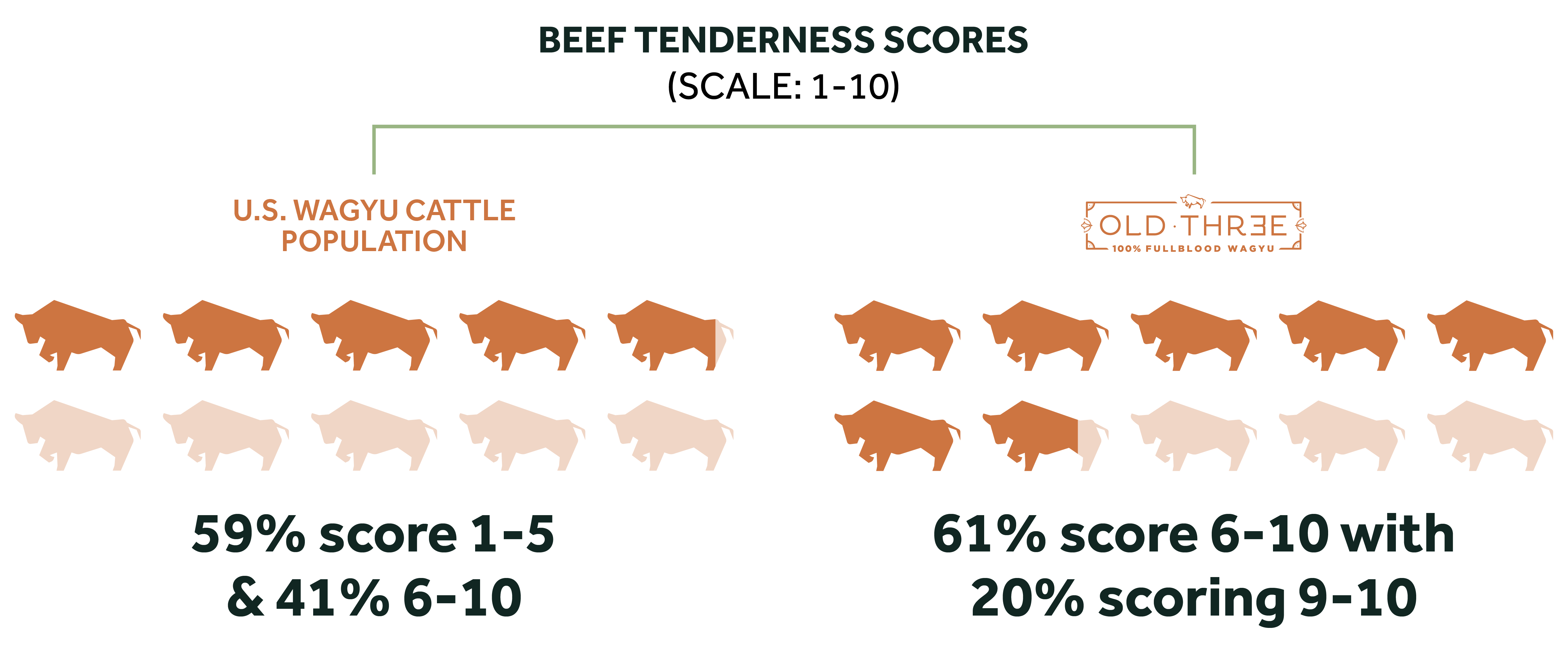WAGYU BREED
…
Wa = Japanese Gyu = Cattle
Wagyu were originally bred in Japan to mechanize the farming industry as draft animals. They were brought to the United States in the mid-1970s and have since been bred for their unsurpassed quality and taste.
Between 1976 and 1997, Fullblood Wagyu were exported from Japan to the U.S. In 1997, after exporting close to 200 cattle, Japan put the export ban (for live cattle) back in place, and Fullblood Wagyu were no longer exported.
Genetic Diversity
*Data from the American Wagyu Association*
It is important to recognize that the variation of conformation within the Wagyu breed is greater than the variation across British and European breeds. The three major black strains evolved due to regional geographic isolation in Japan. These breeding differences have produced a Japanese national herd comprising 90% black cattle, with the remainder red.
Click on each to learn more:
100% Fullblood Wagyu
The American Wagyu Association estimates that there are just over 30,000 Wagyu-influenced animals in the United States. Of that, roughly 5,000 are 100% Fullblood Wagyu. For an animal to be ‘100% Wagyu’ they are D.N.A. certified within the association to confirm the animal’s lineage back to its Japanese origins. Based on the numbers, most Wagyu raised in the United States often fall into Crossbred (F1, F2, F3) or Purebred (F4).

Old Three Wagyu prides itself on being a farm that produces 100% Fullblood Wagyu. Each animal is certified and registered with the American Wagyu Association and Australian Wagyu Association, and its D.N.A. can be traced to its original ancestors in Japan. We believe with 100% Fullblood Wagyu Beef, you recieve 100% of the health benefits found in Wagyu.
Wagyu Breeding
S.C.D. and Tenderness
Over the years, we have come to believe there is a strong correlation between marbling, flavor, and tenderness with a high S.C.D. score, so these tested characteristics lead us in our breeding strategies with the measurement “AA-10” as our goal. D.N.A. testing provides pre-harvest information on beef quality, specifically on marbling (a measure of the intramuscular fat) and tenderness (how much shear force it takes to cut/chew a piece of meat).
While Wagyu is generally known for its abundant marbling and tenderness, genetics play a significant role in both characteristics. The American Beef Industry has found an exceptional correlation between D.N.A. marker testing scores (scale of 1 (low) – 10 (high)) and post-harvest meat tenderness testing.
Studies have also found the measurement of S.C.D. was “a useful tool for selection of favorable flavored beef carcasses.” It points out that all mammals have this gene, but in the Wagyu, it is turbocharged. This gene turns the saturated fat, known as stearic acid, into monounsaturated oleic acid, where the flavor comes from. Not only is unsaturated fat healthier, but it is also more desirable and pleasing to the palate. D.N.A. sequences in Wagyu cattle are placed into two classifications of amino acids: A (Alanine) and V (Valine). Wagyu carry a genetic mutation that changes Valine to Alanine: the presence of A-type amino acids has a lower melting point of fat. Thus, the preferred S.C.D. designation is A.A.

